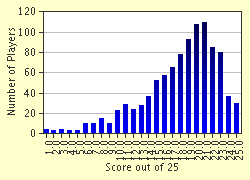Quiz Answer Key and Fun Facts
1. A is for a street in the St John's Wood area, famous for its recording studios. What is its name?
2. B is for the district surrounding the British Museum. It is known as a centre of literary and intellectual life. What is it called?
3. C is for the area between the Strand, St Martin's Lane/Monmouth Street, High Holborn and Kingsway. It contains the Royal Opera House and used to be famous for its fruit, vegetable and flower market. What is it called?
4. D is for the museum at 48 Doughty Street. It is the only surviving London residence of the man whom it commemorates. What is the name of the museum?
5. E is for a roundabout in South London which is the meeting place of Newington Causeway, New Kent Road, Walworth Road, Newington Butts, St George's Road and London Road. It takes its name from a pub. What is that name?
6. F is for the shop at 181 Piccadilly. It is one of the most famous gourmet food shops in the world, and is named after its two eighteenth-century founders. Who were they?
7. G is for the area with the postcode SE10. It contains the old Royal Observatory, the Royal Naval College and the National Maritime Museum and is the mooring place of the tea-clipper "Cutty Sark". What is the name of this place?
8. H is for a north-western suburb which is traditionally described as "on the Hill." It is the home of one of England's most famous public (i.e. private) schools What is it called?
9. I is for the "island" or peninsula formed by a bend in the Thames between Limehouse and Blackwall. It contains the disused and redeveloped West India and Millwall Docks and the Canary Wharf tower. It is called the Isle of _______?
10. J is for a street which runs parallel with the south side of Piccadilly from St James's Street to Regent Street and on into Haymarket. It is famous for luxury shops, especially for men's clothes. What is it called?
11. K is for a house at Hampstead containing a collection of pictures known as the Iveagh Bequest. What is the name of the house?
12. L is for London's biggest square, just south of High Holborn. What is it called?
13. M is for the area surrounded by the western end of Oxford Street, Park Lane, Piccadilly and Regent Street. It is synonymous with luxury and is the most expensive square on the British Monopoly board. What is it called?
14. N is for an area of North Kensington, famous for its annual street carnival. It was the setting for a 1999 film starring Hugh Grant and Julia Roberts. What is its name?
15. O is for the big exhibition venue near the boundary of Kensington and Hammersmith & Fulham. What is its name?
16. P is for the street that runs from the north-west corner of Trafalgar Square to the southern end of St James's Street. It takes its name from an old ball game, and is famous for its gentlemen's clubs. What is it called?
17. Q is for a pub which features prominently in the London-based soap opera "EastEnders." How is it generally referred to by the characters?
18. R is for the home of William Morris at Bexleyheath in south-east London. What is it called?
19. S is for the district bounded by the eastern end of Oxford Street, Regent Street, Shaftesbury Avenue and Charing Cross Road. Traditionally a cosmopolitan area and a place to eat out, what is it called?
20. T is for the south-western suburb of London that is known as the headquarters of Rugby Union in England. What is its name?
21. U is for a football ground in East London which used to be home to West Ham United. What is its name?
22. V is for the road bridge that crosses the Thames upstream from Lambeth Bridge and downstream from Chelsea Bridge. What is it called?
23. W is for the ancient building which now serves as the vestibule to the Houses of Parliament. What is it called?
24. EX is for a building that once stood on the site of today's Strand Palace Hotel. It served Victorians as a concert hall and also as a famous meeting place for various evangelical and philanthropic bodies. What was it called?
25. Y is for an organization which was founded at a meeting in St Paul's Churchyard in 1844 and which provides accommodation and recreational and educational facilities for young people. Today there are parallel associations in 120 countries around the world. The organization is known by a 4-letter acronym - what is that acronym?
Source: Author
TabbyTom
This quiz was reviewed by FunTrivia editor
minch before going online.
Any errors found in FunTrivia content are routinely corrected through our feedback system.

